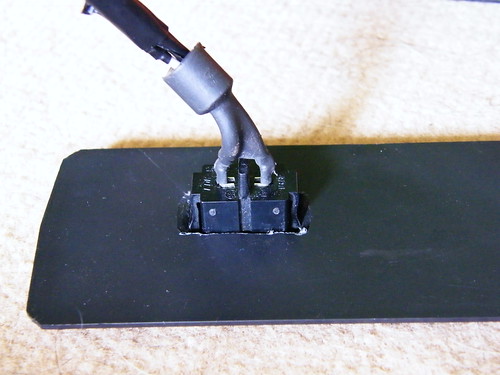A doorbell is not the most important equipment of a home, however it is necessary and it still matters in a way. It is the thing that makes the first impression of your home to any visitor. The standard school-bell type doorbells hurts the ears and freaks out everyone who dares to touch the button and anyone who is unfortunate to be home at the time. A musical doorbell can be really expensive and the sound of the cheaper ones are simply annoying. Why not try to build one at home?
Hardware
It can be easier than it seems at first glance. Almost every part of it can be found in the drawer of an average hardware hacker:
- Any speaker scooped from an old PC
- A cheap MCU
- An NPN transistor
- An 1K resistor
- Optionally a potmeter for volume control
- 4 diodes
- 2 capacitors
- An 5V linear regulator (L7805)
The theory of operation is really simple: the MCU drives the speaker with a square wave on an arbitrary frequency to make a sound. Because the MCU usually cannot bear high current enough to make it loud, a transistor is used to drive the speaker.
The power source may be a standard bell transformer, which makes 12V AC from the 230V AC. In my case it was given as in our apartment building there is one generator for more apartments. To provide a stable 5V for the MCU, a simple Graetz-bridge can be used along with a linear regulator.
Software
The software part is just as simple. The first problem is to make the proper frequency for the square wave output. The simplest approach for this is to use a timer integrated into the MCU, and toggle the output on the timer interrupt. Now the frequency can be set by the timer options.
The other task of the MCU to switch the settings of the mentioned timer after a time to make a series of sounds. I’ve used another timer to interrupt in every ~0.2sec, which decrements a counter to determine the delay for the sound. If the counter reaches zero, the new timer settings and delay counter are loaded from the program memory tables.
Calculation of timer settings
The music you want the bell to play, is a series of sounds with determined frequency. This must be converted to a series of timer settings. For the PIC16F1824 I’ve used, this settings includes the compare register value along with the pre- and postscaler settings. To determine the best settings for each sound frequency (best = real frequency closest to nominal within the available set of register values) is a straightforward task, but requires a lot of calculations. It is much easier to write a script that makes all the calculations and generates the proper code tables for the program. This way it is easy to change the music to whatever you want.
Finish the bell
All is left is a bit of soldering and putting it in a suitable box:
References
- Code hosted on github: https://github.com/gbalage/hobbyelectronics/tree/master/pic.bell
- MODembed: Model-based IDE for embedded development based on eclipse http://gbalage.github.com/modembed/








